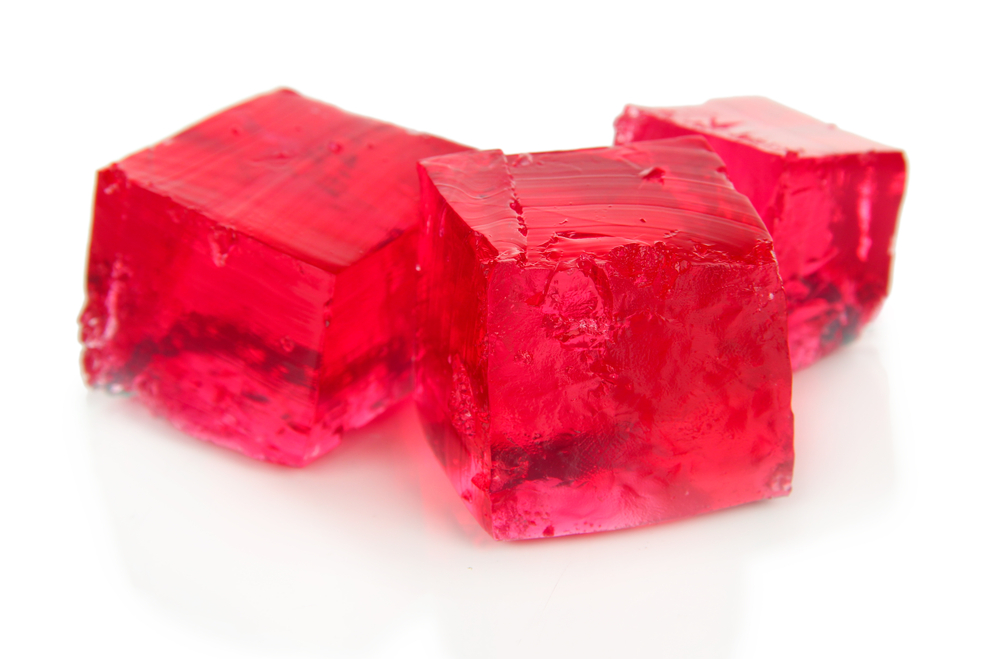What is Jell-O?
Jell-O is made of gelatin, sweetener, and artificial flavorings.

It's brightly-colored, jiggly and a mainstay of dinner tables and frat parties everywhere in America. It's Jell-O, a dessert that's been sold since 1897 .
But anyone whose chewed on that weirdly squishy confection has wondered: what exactly is Jell-O? And why does it have that distinctive texture?
Technically, "Jell-O" is actually a brand name, currently owned by Kraft Heinz, that is used to market a range of desserts and snacks. But most people use the term to refer to the gelatin-based desserts that are also sold under the "Jell-O" name. The jiggly red dessert we think of as Jell-O is made up of almost 90% sugar, although the key ingredient that gives Jell-O its distinctive consistency is gelatin. (The dessert also contains artificial colors, sweeteners and other flavorings, such as strawberry, orange and lime.)
Gelatin itself is a collection of long, stringy animal-based proteins called collagen, which bond together in three-stranded helical structures — similar to the two-stranded helices of DNA. It is created by cooking that collagen, according to Healthline.
Urban legends claim that gelatin comes from horse or cow hooves, though that's not the case. The collagen in gelatin does come from boiling the bones and hides of animals processed for their meat (usually cows and pigs). But hooves consist of a different protein, keratin, which can't produce gelatin.
To make Jell-O, you need to heat the gelatin in water. Heating breaks the bonds holding the collagen together. Next, the heated water-gelatin solution must be cooled, allowing the collagen strands to rebond in a network, but if it's cooled with the right timing, water molecules will get trapped inside this collagen-network, Scientific American reported. The collagen network gives Jell-O its semisolid properties, while the trapped water keeps it jiggly.
Originally published on Live Science.
Get the world’s most fascinating discoveries delivered straight to your inbox.

Michael Dhar is a science editor and writer based in Chicago. He has an MS in bioinformatics from NYU Tandon School of Engineering, an MA in English literature from Columbia University and a BA in English from the University of Iowa. He has written about health and science for Live Science, Scientific American, Space.com, The Fix, Earth.com and others and has edited for the American Medical Association and other organizations.
 Live Science Plus
Live Science Plus






